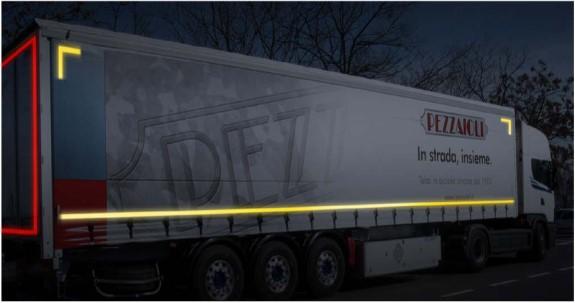We use cookies to make your experience better. To comply with the new e-Privacy directive, we need to ask for your consent to set the cookies. Learn more.
Why RVLR Require Classes of Large vehicles to Have Retroreflectors
According to recent research, larger vehicles that are moving relatively slowly compared with the speed of following traffic or are stationary altogether, represent a potential traffic hazard and cause of accidents and collisions. Similarly, large vehicles slowly crossing a flow of traffic also present a hazard for drivers who are unable to accurately determine the size or speed of the crossing vehicle.
It has been estimated by the Transport Research Laboratory (TRL) that each year in the UK, between 30-35 car drivers or passengers are killed in road collisions with the back of HGVs and 40-45 are killed in collisions with the side of HGVs. The use of reflective films for vehicles has been shown to help reduce these figures.
Accident data compiled in the UK suggests that when looking at all accidents involving HGV’s, 41% collided with the front of the HGV, 30% struck the side of the vehicle and 13.% hit the rear of the HGV. The data also confirms that larger trucks and HGVs are over-represented in fatal accidents and Heavy goods vehicles represented about 1.7% of the vehicles on UK roads yet they were involved in 15% of accidents that resulted in fatal casualties.
Early research by the Motor Industry Research Association (MIRAthat during a two-year study of commercial vehicle accidents concluded that 13% of the 200 accidents recorded were conspicuity related which is defined as those accidents which ‘might have been reduced in severity or avoided altogether had the other road users seen the HGV earlier’. Of these 26 recorded collisions, 50% happened in conditions of poor visibility (twilight or night) where improvements to the truck’s visibility might have helped in avoiding the accident or at least its severity.
Various methods have been suggested as a means for improving the driver’s visual processing including improved illumination of the roads, the use of bright colours and high contrast patterns and the use of reflective markings. Improving the visibility of a vehicle, specifically, an HGV can therefore have a positive impact on reducing the number of collisions where conspicuity is a factor.

